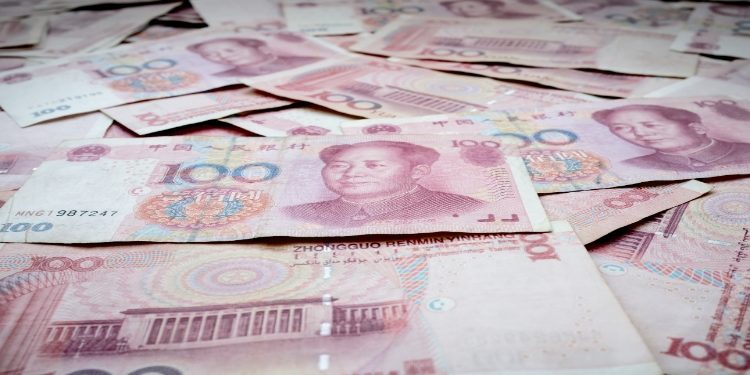The Digital Yuan, China’s central bank digital currency, has sparked interest worldwide. One key aspect of this currency is its transaction limits, which play a crucial role in its adoption and use. Understanding these limits is essential for grasping the currency’s potential impact. For comprehensive analysis and guidance on navigating the transaction limits and other aspects of the Digital Yuan, visit yuan-mastery.com.
Current Understanding Of Transaction Limits For The Digital Yuan.
The current understanding of transaction limits for the Digital Yuan, China’s central bank digital currency (CBDC), is characterized by a nuanced approach aimed at balancing the currency’s utility with regulatory concerns. While specific details regarding maximum transaction limits remain undisclosed by the People’s Bank of China (PBOC), it is widely believed that the Digital Yuan’s design allows for flexibility in setting transaction limits based on various factors.
Unlike traditional cryptocurrencies such as Bitcoin, which often have decentralized and predetermined transaction limits, the Digital Yuan’s transaction limits are expected to be dynamic and adaptable. This adaptability is seen as a deliberate measure to address potential risks such as money laundering, fraud, and excessive capital outflows.
The PBOC has indicated that transaction limits for the Digital Yuan could vary depending on the level of identity verification of users, with higher limits potentially available to users who have undergone more stringent identity verification procedures.
Overall, while the specifics of transaction limits for the Digital Yuan remain undisclosed, the current understanding is that the PBOC is adopting a cautious and adaptive approach to setting these limits. This approach reflects the PBOC’s dual mandate of promoting the use of the Digital Yuan for legitimate transactions while mitigating risks associated with illicit activities. As the Digital Yuan continues to evolve and gain wider adoption, it is expected that further clarity regarding transaction limits and their implications will be provided by the PBOC.
Official Maximum Transaction Limit Set By The People’s Bank Of China.
The People’s Bank of China (PBOC) has not officially disclosed a maximum transaction limit for the Digital Yuan, its central bank digital currency (CBDC). The lack of a specific, publicly announced maximum transaction limit is in line with the PBOC’s approach to the Digital Yuan, which prioritizes flexibility and adaptability to different use cases and regulatory requirements.
Instead of a one-size-fits-all approach, the PBOC is likely to set transaction limits based on factors such as the identity verification status of users, the type of transaction, and the overall risk management framework.
It is important to note that while there is no official maximum transaction limit set by the PBOC, there are indications that transaction limits for the Digital Yuan may be subject to change based on evolving circumstances. For example, during the pilot testing phase of the Digital Yuan, different transaction limits were applied to different user groups, with higher limits available to users who had undergone more rigorous identity verification procedures. This suggests that the PBOC is willing to adjust transaction limits based on the level of risk associated with different transactions.
Overall, the absence of an official maximum transaction limit for the Digital Yuan reflects the PBOC’s cautious and adaptive approach to regulating its CBDC. By not setting a rigid maximum transaction limit, the PBOC can better respond to changing market conditions and regulatory requirements, while also ensuring that the Digital Yuan remains a viable and efficient means of digital payment in China.
Changes Or Updates Regarding Transaction Limits For The Digital Yuan.
Potential changes or updates regarding transaction limits for the Digital Yuan, China’s central bank digital currency (CBDC), are expected to be driven by a variety of factors. One key factor is the evolving regulatory environment surrounding digital currencies and financial transactions in China.
As the PBOC continues to refine its regulatory framework for the Digital Yuan, updates to transaction limits may be introduced to enhance the currency’s ability to address concerns such as money laundering, fraud, and capital outflows.
Another potential driver of changes to transaction limits for the Digital Yuan is technological advancements. As the underlying technology supporting the Digital Yuan evolves, such as the use of blockchain and other distributed ledger technologies, the PBOC may explore new ways to enhance the security and efficiency of transactions.
Additionally, changes to transaction limits for the Digital Yuan may also be influenced by the currency’s adoption and usage patterns. As more individuals and businesses begin to use the Digital Yuan for transactions, the PBOC may consider adjusting transaction limits to ensure that the currency remains accessible and usable for a wide range of users.
Conclusion
While the People’s Bank of China has not officially disclosed a maximum transaction limit for the Digital Yuan, it is clear that transaction limits are a dynamic aspect of the currency’s design. As the Digital Yuan continues to evolve, updates to transaction limits are expected to be driven by regulatory, technological, and adoption-related factors.
David Prior
David Prior is the editor of Today News, responsible for the overall editorial strategy. He is an NCTJ-qualified journalist with over 20 years’ experience, and is also editor of the award-winning hyperlocal news title Altrincham Today. His LinkedIn profile is here.













































































